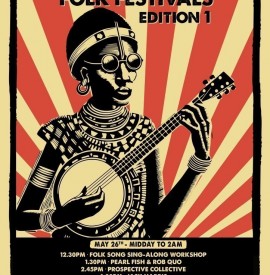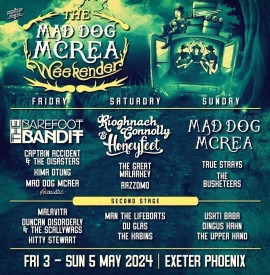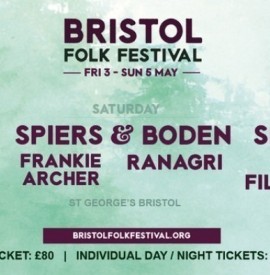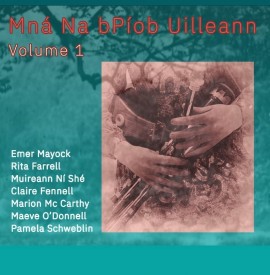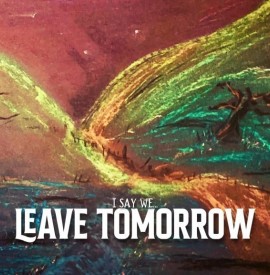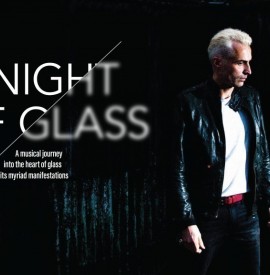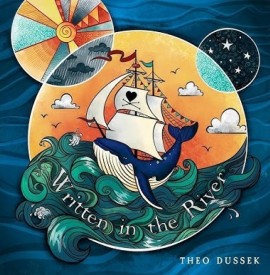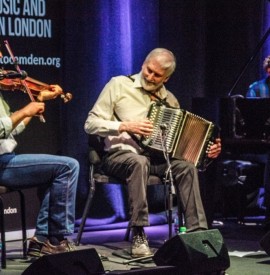London Folk Magazine and News
Celtic Connections: Round Two

Ursula May reviews the second week of Celtic Connections 2021 for Folk & Honey
Celtic Connections brought a second week of online musical offerings, with varied acts to suit different tastes and moods affording an adventure into both familiar and unexplored territory from the safety of the sofa.
This second serving delved more deeply into place and form, with a focus on fiddles, trips to the Celtic heartlands and time spent in their familial territories.
There’s still a heavy dose of the traditional, of course. At its very core, an education in piping begins with “band of pipers, not a pipe band” Tryst, the troupe that beat the Glasgow bounds to open the festival. The ten pipers are top of their game, with Breabach, Old Blind Dogs and RURA members in their midst. Innovators of the ceòl mòr - ‘Big Music’ - of the Highland Pipes, they demonstrate the full breadth of the instrument: percussive, reverberant, melodically vibrant and doleful in turn.
In the Conundrum 2021 popstars’ piper of choice Finlay MacDonald showcases diverse local emerging talent. Of note is Malin Lewis, an intuitive player with a distinctive mellow, bending style. A smallpipe-maker since the age of 14, Lewis brings the tradition right up to date with their own compositions Elision / Trans.
Piper Ross Ainslie, founding member of supercharged supergroup Treacherous Orchestra, is clearly revered across the board. In his Sanctuary Band, traditional instruments don new guises: Greg Lawson’s violin spins otherworldly webs while droning sax and chanting whistle mimic the great pipes. Hope in the Chaos is an urgent, polyrhythmic release that ends with an emphatic pipe blast of defiance in the face of current adversity.
Defiance is also present in the swagger of Elephant Sessions, purveyors of the festival’s annual late-night thrash. They’ve gone all out with custom-built light-up stage, strobes and fireworks. Their funky brand of disco-folk would get a room on its feet in record time, no doubt, in a live setting: backline grooves hard, while fleet-fingered violin and mandolin add a gleeful element of abandon. But screenside, it’s melodious pieces like Summer that carry the most sway: that the band haven’t met or played together for a year brings a poignancy to these more introspective numbers.
Honing in on another trad staple this week, a spotlight on the fiddle features female doyens of the fingerboard.
Fara’s fiery repertoire includes tunes inspired by shared childhood memories. A relaxed playfulness stems from their deep connection and humour - My Favourite Cow is an ode to a pet given by a beef farmer father in lieu of a pony that, unbeknownst to the child, became a new cow every year. Their latest project puts music to the words of Orcadian writers, as in Spier Thoo the Wast Wind in which all sing and play simultaneously. A skilled, spirited trio with all the ingredients to engage and entertain.
Quartet RANT’s name might suggest a forceful tirade of relentless sound, but the traditional meaning is more accurate: the folk-dance step is energetic yet measured. Playing is in turn lush and velvety, then bright and sparky. Experimental sounds paint evocative pictures: landscapes built and stories told. Old classics – Westlin’ Winds; the ‘dark’ hornpipe Annie Allen – complement original tunes, honouring and playing with the tradition.
Kinnaris Quintet‘s trad-centric slow-burn compositions introduce creeping bluegrass influences. There’s no rush in these epic, rising soundscapes as tri-fiddle countermelodies interweave with bluesy mandolin and guitar drives towards a rushing river of sound. In 2020’s This Too Shall Pass exuberant melodies and impatient rhythms release pressure and exude pure joy in the moment.
Fiddles feature, too, in Quebecfest - the most thrillingly wild show of the festival. This is music for dancing, with huge doses of personality, musicality and joie de vivre. The trio Grosse Isle feature an Irish uillean piper, the neatest reference back to the music of our islands. Fiddler Sophie Lavoie plays with substantial attack; woops from an unseen audience are a welcome reference to the live experience notably absent from proceedings until now.
De Temps Antan are another trio but boy, do they make a big sound. They set the tone early doors by suggesting a trade with their Scottish counterparts: maple syrup for whisky. A melange of jaw harp, rhythmic violin, bazouki and accordion augmented by high-tempo foot percussion and the band is one thrumming beast of a machine. Slides, swampy reels and harmonica hint at Cajun and blues. With La Veuve Joyeuse’ doomy bazouki riff, hand claps and static-electric violin, they’re revved up and ready for lift off.
The full-power francophone folk experience Le Vent du Nord throw themselves into the show with adrenaline-inducing vigour. Alongside dual fiddles, accordion, bass and bazouki, a rock’n’roll hurdy-gurdy player strides round the stage, growling and howling to the others’ delight. A high energy polyrhythmic stepdance, podorythmie, is the band’s percussion. “We want to see you dance now!” they shout – resist if you dare.
Closer to home, a Night of Wales is comparatively quiet and introspective but no less compelling. Situating performers in the landscape, it gives intimate insight into the influence of place, providing valuable context as well as sumptuous views to soak up alongside the transporting music.
Celtic tradition still lives and thrives in Wales, ‘the land of song.’ Cymraeg is the most widely spoken of the Celtic languages, set to reach 1m speakers by 2050. Music old and new plays a big part in the consolidation and dissemination of the language; eisteddfodau and festivals increasingly embrace and intertwine modernity with tradition, keeping the old ways alive and relevant. One of these, Ara Deg, filmed this feature in place of their 2020 live event.
Snowdonia is a striking location, home to the UK’s highest peaks outside of Scotland, and the film is an extraordinary visual treat. Gruff Rhys of Super Furry Animals sings Pang! from the middle of a river; the breath of wind plucks ethereal melodies from a wind harp beneath snow-capped mountains; in a grey street Cerys Hafana plops down an amp and plays a baby pink guitar; Lisa Jen loops and layers her voice suggesting echoes and reverberations from surrounding slate caves and outcrops. She’ll be performing at Neuadd Ogwen’s Festival of Indigenous Languages in January 2022, the start of UNESCO’s decade in their honour.
Back to Scotland with Home on the Sea: a roam around the islands’ expanses of wild-green-nothing specked with sparse communities; and a poke around the music on offer in these characterful little settlements. It´s quite clearly a Scottish January: woolly jumpers, hats and waterproofs abound, and singers’ breath appears in clouds of mist on the icy air. I tuck another blanket round my legs and hug my cocoa.
Tunes from a damp-looking deck in Eigg provide a view of the sea beyond rusty bracken and emerald grasses. Singular piper Malin Lewis appears against a backdrop of Skye’s snow-capped mountains. Gillian Frame and Findlay Napier step outside for a fiddle/guitar duet: in the quiet landscape of Arran, surrounded by water, these two playing old Gaelic tunes for themselves and the sky feels like real living tradition.
The heroes of the hour are Peat & Diesel, a good old-fashioned punk-rock trio coming live from the Lewis ferry waiting room. Their tales of island ways and life on the road have heart, soul and humour in spades; distorted guitar and accordion hooks are reminiscent of the gloriously shambling folk-punk tradition, choruses as catchy as any big boy rocker tune. No wonder the band have inspired Peatlemania. Those boys definitely give it laldy.
Finally, we’re thrown in the deep end with an all-Gaelic show from North Uist, a picturesque island in the Outer Hebrides steeped in culture and heritage. As the full moon rises a white-hot line appears on hillside and buildings: the tide-activated light installation warns of the impact of rising sea levels caused by global heating. The small community are on the brink, of cliff, sea and world, with horizons stretching north to Iceland and east to the distant realms of Greenland and Newfoundland. Music runs deep here.
And that’s that. Stepping out of the sound bath it’s hard not to feel bereft. Still, hope can be grasped from the hordes of musicians out there waiting, poised, in the wings, ready to leap out the instant they’re able. In the words of Dreamers’ Circus: “The world is waiting… You’re not sure what’s going to happen and when, but at some point – it’s gonna happen.”
Until then, here are some things you can do:
Listen to Kathryn Tickell’s Celtic Connections special, broadcast on 30 January. She features the festival Big Band, Le Vent du Nord, Kathleen MacInnes, Gnoss and live performances from 2019.
Visit The Portal by Martin Green, a story of the most incredible collection of 20th century musical documentation ever made.
Get playing! Join the Glasgow Folk Workshop for online folk lessons of the highest calibre. Term starts on 15 February.
Have a listen to my playlist of Celtic Connections highlights on Spotify
Ursula May on Instagram: @ursulambb
Email: maybessiebill@gmail.com









